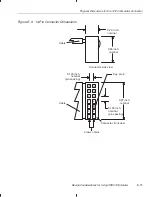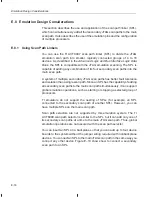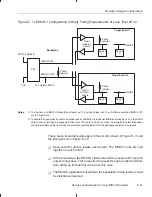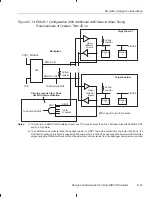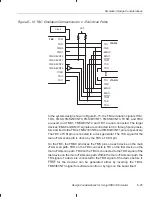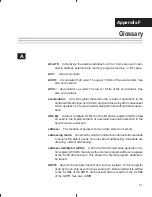
Connections Between the Emulator and the Target System
E-12
E.6.2
Using a Target-System Clock
Figure E–6 shows an application with the system test clock generated in the
target system. In this application, the emulator’s TCK signal is left uncon-
nected.
Figure E–6. Target-System-Generated Test Clock
NC
System test clock
VCC
Emulator header
GND
12
10
8
6
4
5
GND
GND
GND
GND
GND
PD
TCK_RET
TCK
TDO
TDI
TMS
TRST
EMU1
EMU0
9
11
7
3
1
2
14
13
JTAG device
TCK
TDO
TDI
TMS
TRST
EMU1
EMU0
Greater than
6 inches
VCC
Note:
When the TMS and TDI lines are buffered, pullup resistors must be used to hold the buffer
inputs at a known level when the emulator cable is not connected.
There are two benefits in generating the test clock in the target system:
-
The emulator provides only a single 10.368-MHz test clock. If you allow
the target system to generate your test clock, you can set the frequency
to match your system requirements.
-
In some cases, you may have other devices in your system that require
a test clock when the emulator is not connected. The system test clock
also serves this purpose.


















